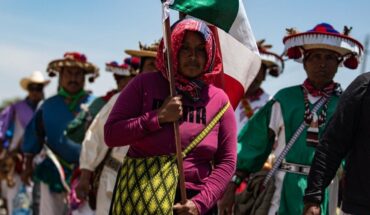As hosts of the iconic global climate change summit (COP25), Chile cannot be oblivious to the great citizen demands that aim to combat future scenarios of water scarcity, loss of biodiversi catastrophes that we are facing and which will worsen in the short and medium term if we don’t do something now. In this scenario, a citizen campaign has raised its voice to ask the government to declare National Park the only and last large public territory of central Chile, located in the Cajon del Maipo in the Metropolitan region. With 142,000 ha, the Colorado and Olivares tax grounds offer a lifeline to seven million inhabitants of the Metropolitan region and give the government the opportunity to demonstrate its real commitment to the international agreements it has signed, with citizenship and with the environment, presenting this park to the whole world.
According to the International Union for Conservation of Nature (IUCN), protected areas are recognized as powerful tools to combat climate change, arguing that they not only help conserve biodiversity and ecosystems, but also In addition, they provide clean water, maintain watersheds and water in the soil, store and capture carbon; reducing greenhouse gases, reducing the risk of natural disasters, stabilizing the slopes avoiding landslides, acting as genetic information banks and preserving our culture and nature
There are two concrete ways in which countries can cope with climate change; taking mitigation and adaptation actions. When we talk about mitigation we mean all those actions that aim to reduce and/or limit greenhouse gas emissions, while adaptation is based on reducing the vulnerability of natural and human systems to the effects real or expected of climate change. So how can this long-linepark contribute in the current climate change scenario and its negative consequences?
Regarding mitigation, about 30% of the Colorado and Olivares valleys are areas of high-andean grasslands, scrubandes and wetlands that can contain large amounts of carbon. However, these spaces are currently used to carry out livestock without any management or administration that helps prevent and/or prevent the degradation of these ecosystems and carbon loss. The IUCN suggests as a solution, expanding protected areas in prairie habitat, integrating low-load grazing or livestock to help rebuild and maintain these carbon deposits. On the other hand, in the particular case of wetlands, which cover about 2% of the total area, it is important to pay special attention before taking any action given their fragility and specific ecological functions.
Adaptation includes the protection, sustainable management and restoration of ecosystems to maintain the goods and services that help people adapt to the effects of climate change. For example, by decreasing the amount of rain from climate change, protecting water sources becomes crucial. With nearly 300 glaciers covering an area of 18,000 ha, the future Colorado Olivares Park becomes the largest freshwater reserve for the inhabitants of the Metropolitan region, both for consumption and agriculture. Without protection, or territorial management consistent with the situation we are experiencing, this important reservoir could be lost by making the great water crisis in the region worse.
To this strategic importance, the unique beauty of these poignant mountain landscapes that have summits of more than 5,000 and even 6,000 meters above sea level, which, at a short distance from Santiago, offer the opportunity to improve access to the mountain and thus bring citizens closer to nature. Therefore, we would expect that, with good planning and administration, this space would serve as a classroom to promote the construction of a society that relates much more harmoniously and respectfully to nature.
Unfortunately, the Colorado and Olivares, currently lack all public management, and like many mountain territories, this place is haunted by various economic activities, particularly mining companies, such as Anglo American and Codelco , which already have several exploration and exploitation concessions granted within the area, a use that is no stranger to the reality of these valleys. In the heart of this wonderful territory, which belongs to all of us, there is already a private property of 16,000 ha that was sold to cement Bío-Bío, owners of the la Perla mine, which exploits lime and that will continue to do so for another 30 years , thanks to the recent Environmental Impact Assessment Service, granted them the permits to continue operating on site, despite being aware that they are inserted in a space of great interest for ecosystem conservation, protection of the water and the development of local tourism. A precedent that certainly puts us on alert to a potential scenario that could be faced with this vital territory if we don’t do something now.
The call is to take concrete action in the face of the alarming effects of climate change and to demand from the government our right to exercise sovereignty. The government has only this opportunity to do socio-environmental history and justice in an area, where less than 2% of the territory is protected and thus makes it easy to prey to business pressures and the effects of climate change.
The content poured into this opinion column is the sole responsibility of its author, and does not necessarily reflect the editorial line or position of El Mostrador.





